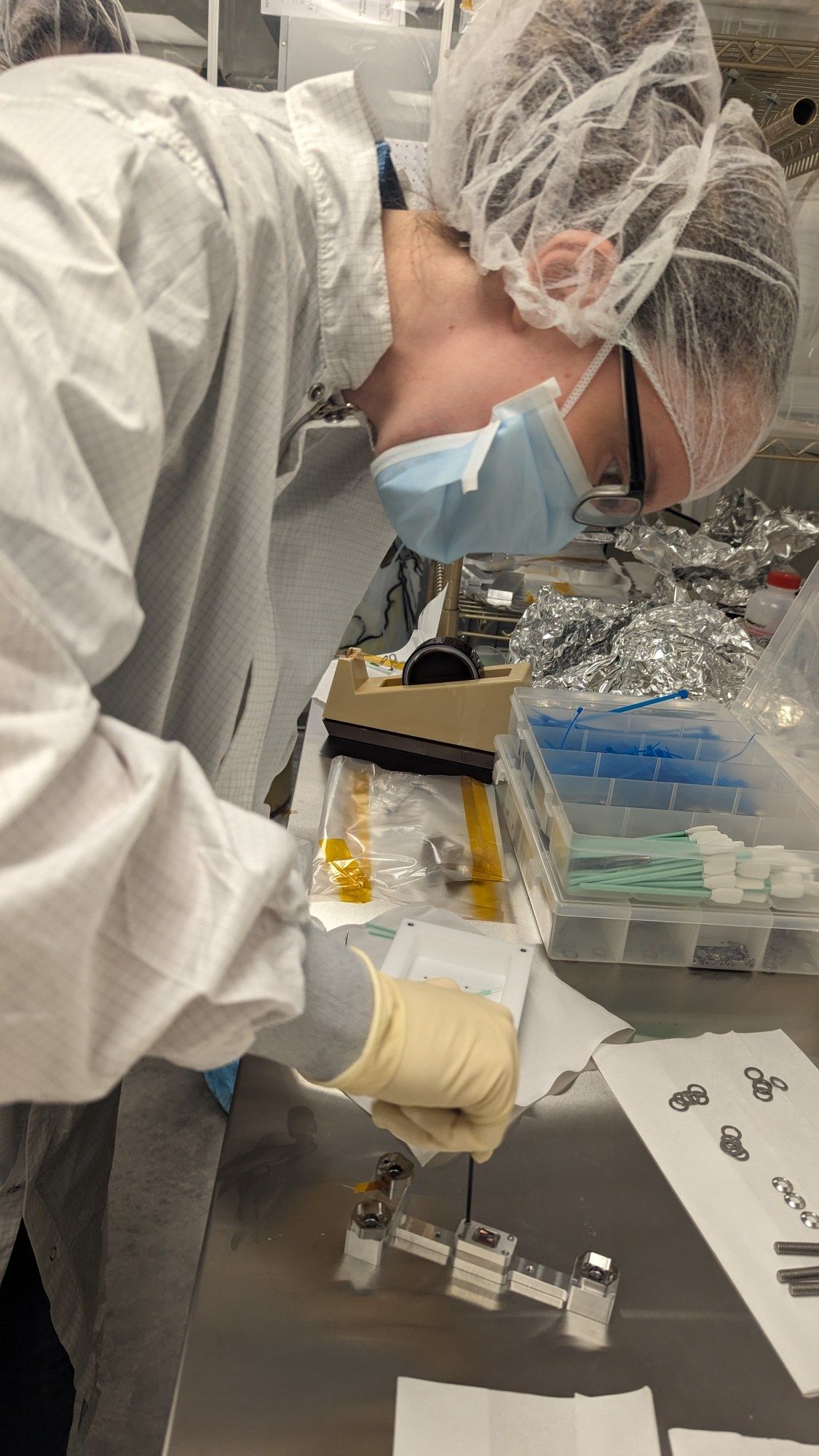A new sounding rocket mission is headed to space to understand how explosive stellar deaths lay the groundwork for new star systems. The Integral Field Ultraviolet Spectroscopic Experiment, or INFUSE, sounding rocket mission, will launch from the White Sands Missile Range in New Mexico on Oct. 29, 2023, at 9:35 p.m. MDT.
29.10.2023
For a few months each year, the constellation Cygnus (Latin for “swan”) swoops through the northern hemisphere’s night sky. Just above its wing is a favorite target for backyard astronomers and professional scientists alike: the Cygnus Loop, also known as the Veil Nebula.


Supernovae are part of a great life cycle. They spray heavy metals forged in a star’s core into the clouds of surrounding dust and gas. They are the source of all chemical elements in our universe heavier than iron, including those that make up our own bodies. From the churned-up clouds and star stuff left in their wake, gases and dust from supernovae gradually clump together to form planets, stars, and new star systems.
“Supernovae like the one that created the Cygnus Loop have a huge impact on how galaxies form,” said Brian Fleming, a research professor at the University of Colorado Boulder and principal investigator for the INFUSE mission.
The Cygnus Loop provides a rare look at a supernova blast still in progress. Already over 120 light-years across, the massive cloud is still expanding today at approximately 930,000 miles per hour (about 1.5 million kilometers per hour).
What our telescopes capture from the Cygnus Loop is not the supernova blast itself. Instead, we see the dust and gas superheated by the shock front, which glows as it cools back down.
“INFUSE will observe how the supernova dumps energy into the Milky Way by catching light given off just as the blast wave crashes into pockets of cold gas floating around the galaxy,” Fleming said.
To see that shock front at its sizzling edge, Fleming and his team have developed a telescope that measures far-ultraviolet light – a kind of light too energetic for our eyes to see. This light reveals gas at temperatures between 90,000 and 540,000 degrees Fahrenheit (about 50,000 to 300,000 degrees Celsius) that is still sizzling after impact.
INFUSE is an integral field spectrograph, the first instrument of its kind to fly to space. The instrument combines the strengths of two ways of studying light: imaging and spectroscopy. Your typical telescopes have cameras that excel at creating images – showing where light is coming from, faithfully revealing its spatial arrangement. But telescopes don’t separate light into different wavelengths or “colors” – instead, all of the different wavelengths overlap one another in the resulting image.
Spectroscopy, on the other hand, takes a single beam of light and separates it into its component wavelengths or spectrum, much as a prism separates light into a rainbow. This procedure reveals all kinds of information about what the light source is made of, its temperature, and how it is moving. But spectroscopy can only look at a single sliver of light at a time. It’s like looking at the night sky through a narrow keyhole.
The INFUSE instrument captures an image and then “slices” it up, lining up the slices into one giant “keyhole.” The spectrometer can then spread each of the slices into its spectrum. This data can be reassembled into a 3-dimensional image that scientists call a “data cube” – like a stack of images where each layer reveals a specific wavelength of light.

Using the data from INFUSE, Fleming and his team will not only identify specific elements and their temperatures, but they’ll also see where those different elements lie along the shock front.
“It’s a very exciting project to be a part of,” said lead graduate student Emily Witt, also at CU Boulder, who led most of the assembly and testing of INFUSE and will lead the data analysis. “With these first-of-their-kind measurements, we will better understand how these elements from the supernova mix with the environment around them. It’s a big step toward understanding how material from supernovas becomes part of planets like Earth and even people like us.”
To get to space, the INFUSE payload will fly aboard a sounding rocket. These nimble, crewless rockets launch into space for a few minutes of data collection before falling back to the ground. The INFUSE payload will fly aboard a two-stage Black Brant 9 sounding rocket, aiming for a peak altitude of about 150 miles (240 kilometers), where it will make its observations, before parachuting back to the ground to be recovered. The team hopes to upgrade the instrument and launch again. In fact, parts of the INFUSE rocket are themselves repurposed from the DEUCE mission, which launched from Australia in 2022.
NASA's Sounding Rocket Program is conducted at the agency's Wallops Flight Facility at Wallops Island, Virginia, which is managed by NASA’s Goddard Space Flight Center in Greenbelt, Maryland. NASA's Heliophysics Division manages the sounding rocket program for the agency. The development of the INFUSE payload was supported by NASA’s Astrophysics Division.
Quelle: NASA
